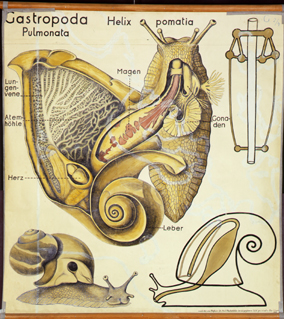Adaptation
Adaptations
Being part of the Subclass Pulmonata, the gill of Fumonelix
wetherbyi has been replaced by a vascular lung that allows
for the snail to breathe air in moist conditions (Burch,
1962).It is for this reason that often they are found under
deep leaf litter, under rocks and other objects that retain
moisture. Typically Pulmonates are most active at night or
whenever moisture in the atmosphere is prevalent, such as after
a good rain (Perez et. 2008).
Shell:
The shell Fumonelix wetherbyi is heliciform(shell
that has elevated whorls), consisting of generally five to six
whorls (Burch,1962), it is of globuse
shape (meaning it formed like a globe), it is of a dull
cinnamon-buff color, it has a medium size parietal tooth
without basal and palatal teeth, and oblique prostrate hairs are
present in fresh forms. The typical size shell is between 17 and 19
millimeters (Dourson, 2010).
Fumonelix wetherbyi is a name that is newer to the
scientific community that started being used about 20 years ago.
Before that, this Polygyrid was formerly known as Mesodon
wetherbyi. The main distinction between the two is the shell.
Mesodon wetherbyi is larger, and has a smoother shell
surface with distinct transverse and spiral striae on their shell
surface, and do not have prostrate hairs (Dourson,2010).
To explore the diet Fumoneliz wetherbyi visit
Nutrition.
Fumonelix wetherbyi Home.